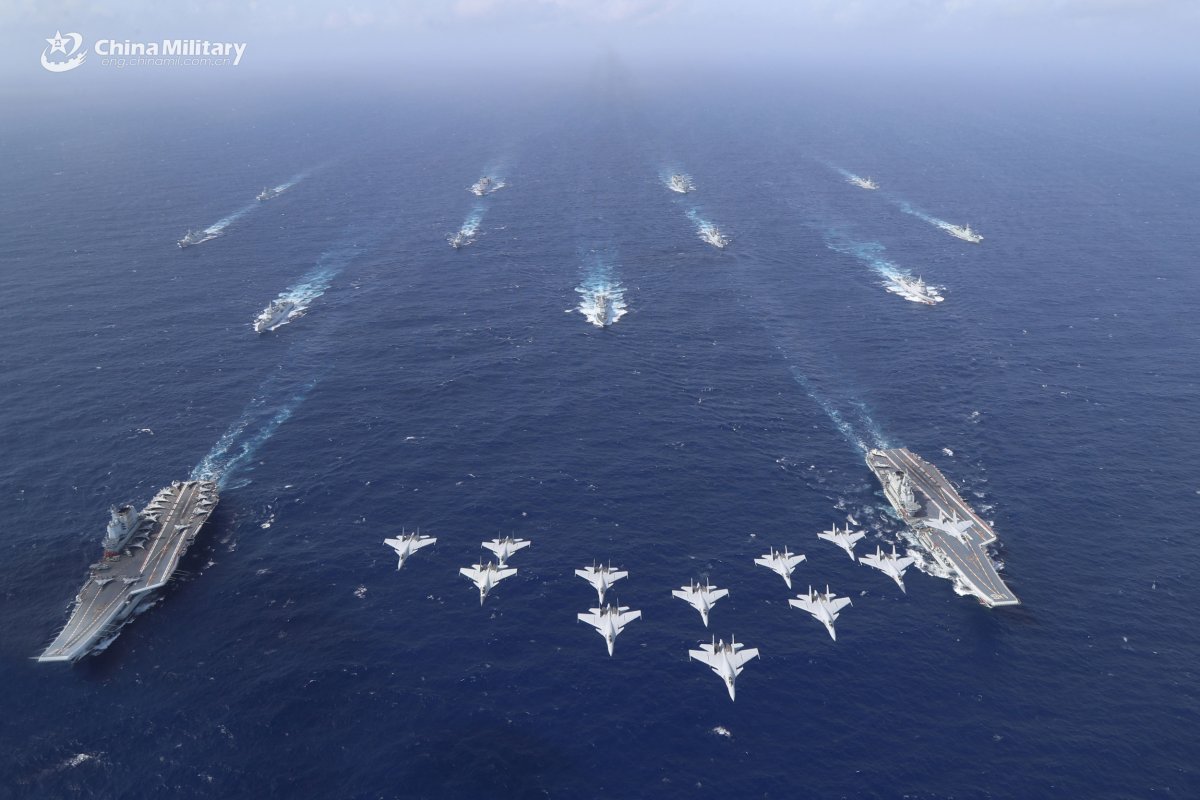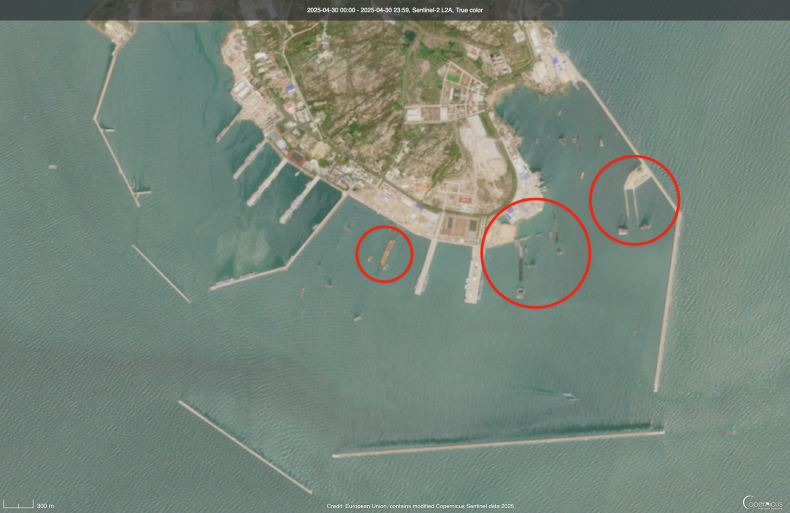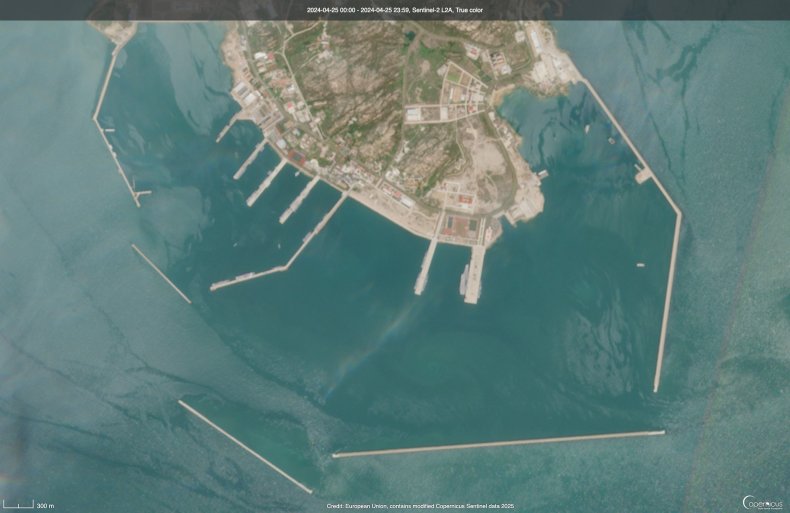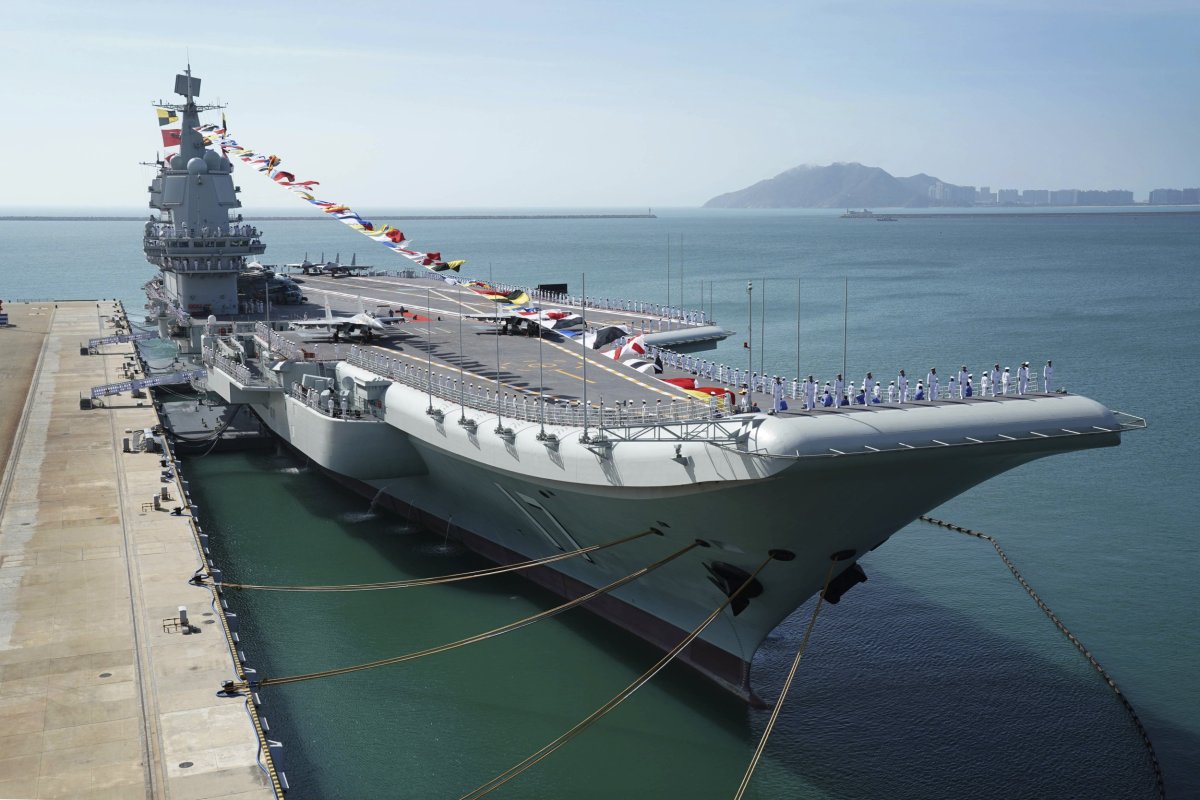Open-source satellite imagery appears to show that China is expanding one of its naval bases that hosts an aircraft carrier, as it seeks to challenge United States naval dominance.
Newsweek has reached out to the Chinese Defense Ministry for comment by email.
Why It Matters
China has the largest navy in the world by hull count, according to a Pentagon assessment. China has a fleet of more than 370 ships and submarines, which includes two aircraft carriers in active service. The United States possesses 11 operational aircraft carriers.

In this image provided by the Chinese military on October 31, 2024, China’s navy conducts dual aircraft carrier operations in the South China Sea, involving aircraft carriers CNS Shandong, front left, and CNS Liaoning, front right.
Chinese military
China is undergoing a rapid naval buildup to expand its military reach and presence and has conducted “very significant construction programs” of related infrastructure for its fleet over the last 10 to 15 years, Australia-based naval analyst Alex Luck told Newsweek.
“A closer look at the rate and type of expansion [of Chinese naval infrastructure], added facilities and total berthing space allows us to make educated assessments as to what sort of naval forces China intends to deploy from what locations,” he explained.
What To Know
According to a Chinese military observer, who requested anonymity because of the sensitive nature of the topic, the expansion of Yuchi Naval Base in Qingdao in northeastern China, which is home to the country’s first aircraft carrier CNS Liaoning, has begun to take shape.
A satellite image captured on Wednesday shows that at least four new piers are being built when compared with a year ago. These include three narrow piers, which are 131 feet wide and will possibly be primarily used to berth the Chinese destroyer fleet, the observer said.
The remaining pier under construction, which is 328 feet wide, could be used by larger ships such as aircraft carriers and supply ships.
The observer noted that Yulin Naval Base, which is located in Sanya in southern China and is also being expanded, does not have any additional pier for aircraft carriers, indicating there will be a second aircraft carrier homeported at Yuchi, in addition to the Liaoning. CNS Shandong, China’s second aircraft carrier, is homeported at Yulin.
Drag slider
compare photos



The yet-to-be-commissioned Chinese aircraft carrier, CNS Fujian, is currently docked at a shipyard in Shanghai in eastern China. The Chinese military has yet to announce its home port.
“Any naval force is only a useful asset as long as the related infrastructure can support their operations,” Luck said, adding that the enlargement of Yuchi Naval Base’s berthing facilities, including those built for aircraft carriers, is the “most dramatic expansion” in recent years.
American aircraft carriers are stationed at four locations: Naval Station Norfolk in Virginia, Naval Air Station North Island in California, and Naval Base Kitsap in Washington state, as well as Yokosuka naval base near Tokyo in Japan, which hosts USS George Washington.
What People Are Saying
Alex Luck, Australia-based naval analyst, told Newsweek: “The benefit of tracking infrastructure is that these efforts are generally easier to observe, including on commercial satellite imagery, compared to naval construction. The latter is still difficult to assess in some respects due to its more secretive nature…the basing infrastructure allows you to judge future scale and force mix to a reasonable extent regardless of such restrictions.”

Chinese aircraft carrier CNS Shandong is seen at Yulin Naval Base in Sanya in southern China on December 17, 2019.
Li Gang/Xinhua via AP
A Chinese military observer, who requested anonymity because of the sensitive nature of the topic, told Newsweek: “A carrier doesn’t act alone, it also needs to provide support facilities for the entire [carrier strike] group. Currently there are no bases of this size other than the homeports of the three major fleets. And there are no signs of any large-scale expansion at [Eastern Theater Command]’s Zhoushan base.”
The three Chinese major fleets are assigned to the Northern, Eastern, and Southern Theater Commands. Each theater navy has its subordinate submarine flotillas, surface ship flotillas, aviation units, and naval bases, the Pentagon stated in its Chinese military power report.
What Happens Next
It remains to be confirmed whether the Fujian will be homeported at Yuchi Naval Base after it enters service. Meanwhile, the number of Chinese naval bases capable of hosting aircraft carriers could be increased if China decided to build additional carriers in the future.







